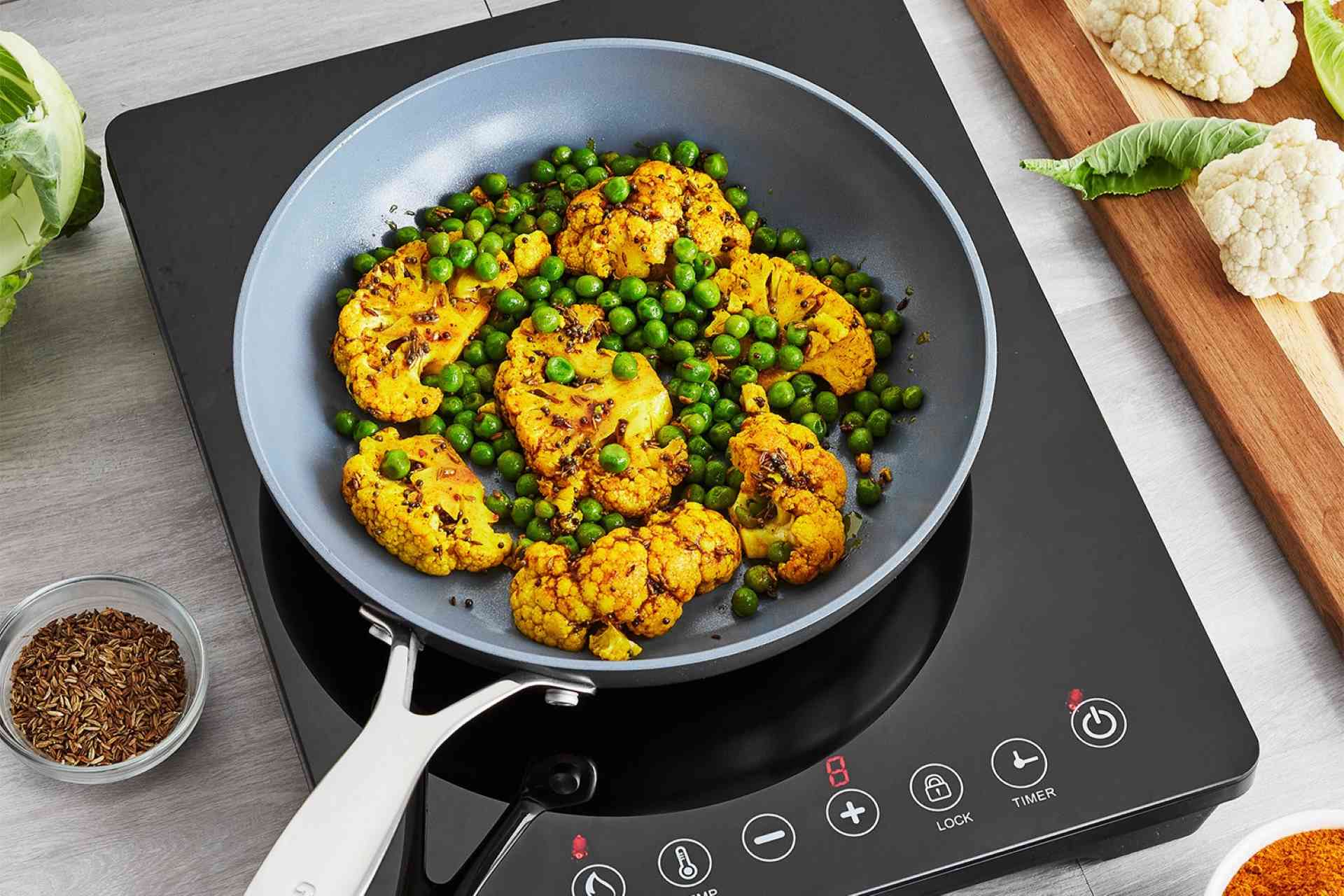Become the Hostess With The Mostest


As induction cooking gains popularity, it’s clear that this technology is not merely a trend but a transformative shift in how we approach meal preparation.
Its safety features, especially the cool-to-the-touch cooktop, make it an appealing choice for families and professionals alike. The induction stovetop also stands as a testament to the ongoing innovation in kitchen technology, promising a future where cooking is not just about the end result, but also about a smarter, safer and more efficient journey from pan to plate.
Read on to learn what induction stoves are, understand how they work, explore their benefits and get guidance on choosing the right cookware to make the most of this innovative cooking technology.
Hungry for more? When it comes to induction cookware, we’ve got you covered—from cast iron to nonstick and stainless steel!
Induction stovetops offer a stark contrast to traditional gas or electric cooktops, which rely on transferring heat from a burner or element to the cookware. Instead, induction stovetops generate heat directly in the pot or pan through an innovative use of electromagnetic fields. This process begins with a coil of copper wire located under the cooking surface.
When an electric current flows through this coil, it creates a magnetic field. The key to this technology is the use of ferromagnetic cookware—meaning pots and pans made from materials that are attracted to magnets, like cast iron or certain stainless steel cookware.
When this type of cookware is placed on the cooktop, the magnetic field induces an electric current directly in the pot or pan. This current, in turn, generates heat through resistance within the cookware itself. As a result, the cookware heats up efficiently and quickly, while the stovetop surface remains at a much lower temperature.
The fundamental difference between induction stoves and their gas and electric counterparts is in the method of heat transfer. Gas stoves use an open flame to heat cookware, which can be uneven and less efficient, as a significant amount of heat escapes into the air. Electric stoves, on the other hand, heat an element (such as a coil or a ceramic plate) which then transfers heat to the cookware. This process is more energy-efficient than gas cooking but still loses heat to the surrounding air and takes longer to adjust the temperature of the cookware.
Induction stovetops are more than just a modern kitchen appliance—they represent a leap forward in cooking technology, offering a blend of efficiency, safety and precision that traditional cooking methods struggle to match. Here are some key benefits that make induction stoves a valuable addition to any kitchen.
It directly heats the cookware, minimizing heat loss and ensuring that more energy goes into cooking the food rather than heating the kitchen. This efficiency can lead to significant savings on energy bills over time.
The cooking surface itself remains relatively cool, as the heat is generated in the cookware, not the stovetop. This drastically reduces the risk of burns from touching the stovetop surface. Furthermore, without an open flame or hot heating element, there’s a reduced risk of fires, making induction cooktops a safer option, especially in households with children.
When embracing the innovative world of induction cooking, selecting the appropriate cookware is crucial. As previously discussed, induction stoves require cookware with ferromagnetic materials, such as cast iron or specific types of stainless steel, to function.
To determine if your current cookware is compatible with an induction cooktop, you can perform a simple magnet test.
Take a magnet and see if it sticks to the bottom of your cookware. If it does, the pan is suitable for induction cooking. This test works because only magnetic materials will interact with the induction cooktop’s electromagnetic field.
Transitioning to an induction stovetop can significantly enhance your cooking experience, blending speed, precision and safety into your culinary practices. To fully harness the capabilities of your induction cooktop, consider the following tips and strategies.
Hungry for more? When it comes to induction cookware, we’ve got you covered—from cast iron to nonstick and stainless steel!
Join The Conversation